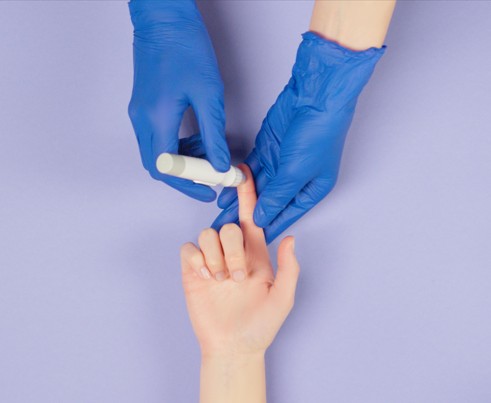If you’re putting in the work, chasing performance gains, or just want to make sure your training is actually moving you forward, lactate testing is one of the best tools you can use. I’ve been using it in my own training and now offer it to both coached and non-coached athletes who are data-driven and want to train with intention.
I believe in using real data to guide every step—and lactate testing gives us that.
What Is Blood Lactate Testing?
Lactate testing measures how much lactate (a byproduct of energy production) builds up in your blood as exercise intensity increases. It helps us pinpoint two key markers: your aerobic threshold (LT1) and your anaerobic threshold (LT2).
These thresholds are essential for understanding how your body handles different training intensities. If you’re trying to improve performance, avoid burnout, or make every session count, this is the kind of data you want in your corner.
Why I Use Lactate Testing in My Own Training
Like most athletes, I used to rely on FTP tests, pace charts, and heart rate formulas. But those are just estimates – they don’t always reflect what’s happening inside your body. Lactate testing gives us a clearer picture. It’s specific, measurable, and actionable.
Personally, testing has helped me dial in my intensity zones and stay out of that common “gray zone” trap – going too hard on easy days and too easy on hard days. The result? More consistency, better recovery, and race-day performances that reflect the work I’ve put in.
How It Helps Athletes
Whether you’re a runner training for a marathon, a cyclist looking to improve power, or a triathlete trying to pace smarter across all three legs – this kind of testing brings clarity to your training. It’s especially valuable if you feel like you’ve hit a plateau or aren’t sure if your current training is working. Blood Lactate Testing helps us:
- Set truly personalized heart rate and/or power zones
- Track metabolic efficiency and how it evolves over time
- Monitor objective progress, without relying on races
- Make more informed decisions about fueling, pacing, and intensity distribution
What to Expect During a Test
You’ll complete a progressive test—either on the bike or on the run. I’ll take a small blood sample (just a quick finger prick) at the end of each stage to measure lactate levels. The entire process takes about 30–45 minutes. You’ll get a full results breakdown with your personalized zones and actionable insights shortly after.
I offer these sessions in the Chattanooga area. You don’t need to be a current coaching client to schedule a test, but coached athletes receive follow-up tests at a discounted rate.
Who Is It For?
This testing isn’t just for elite athletes. If you care about training smart and making your time count, this is for you. I work with:
- Runners training from 5Ks to ultras
- Cyclists focused on power, endurance, or race strategy
- Triathletes wanting accurate data across all disciplines
- Athletes who like numbers and want to see real progress
- Anyone tired of guessing and ready to train smarter
You’re already doing the work. Let’s make sure it’s the right work.
Book your test here or reach out with questions. I’m happy to help you figure out if this is the right next step for your training.
Coach Kat

